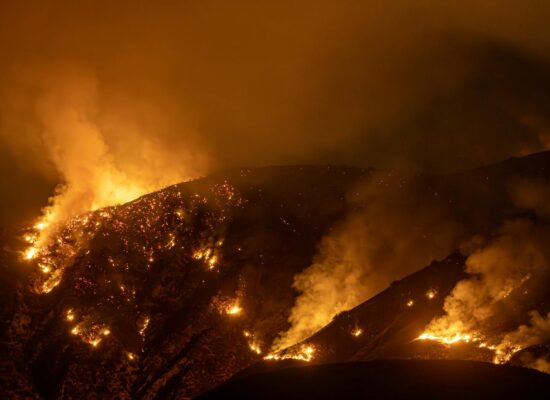2024 has been a year of staggering natural disasters, each leaving a trail of destruction and heartbreak in its wake. From hurricanes to wildfires, the U.S. has faced an unprecedented number of billion-dollar disasters, and the final tally of damage is still being calculated. According to the National Oceanic and Atmospheric Administration (NOAA), the total cost of these disasters has already reached $61.6 billion—and that number is expected to grow.
As of November 1, there have been 24 confirmed weather or climate-related events in the U.S. that caused losses exceeding $1 billion each. These include 17 severe storms, four hurricanes, one wildfire, and two winter storms. Together, these disasters claimed at least 418 lives and caused massive economic losses across the country.
Embed from Getty ImagesAdam Smith, an applied climatologist at NOAA, explained that the agency is still crunching the numbers for several of these events, with a full report set to be released on January 9. Since 1980, NOAA has been tracking these billion-dollar disasters, analyzing their impacts and frequency to better understand how they affect American lives and livelihoods.
While the scale of destruction is overwhelming, there’s a silver lining: studying these disasters helps scientists and emergency managers learn from them. “We’re trying to show how the frequency and cost of these events impact different regions and states,” Smith said. “It provides a climatology of where the hot spots are for weather and climate extremes.”
The numbers are sobering. Since 1980, the U.S. has experienced 400 billion-dollar disasters, totaling over $2.78 trillion in losses. And the frequency of these events is increasing dramatically. While the annual average from 1980 to 2023 was 8.5 events, the past five years have seen an average of 20.4 events per year. Climate change is a major factor, but so are population growth and the expansion of infrastructure in vulnerable areas, like coastlines.
Here’s a closer look at some of the most devastating disasters of 2024:
Hurricane Helene
Hurricane Helene was one of the most destructive storms of the year, making landfall in Florida’s Big Bend as a Category 4 hurricane on September 24. With winds up to 140 mph and storm surges reaching 15 feet, Helene caused catastrophic damage in Florida, Georgia, North Carolina, Tennessee, and Virginia. The storm triggered deadly flash flooding in Asheville, North Carolina, and claimed 225 lives. The full extent of the damage is still being assessed, but it’s clear that Helene left a lasting mark.
Hurricane Milton
Just two weeks after Helene, Hurricane Milton struck Florida’s Gulf Coast as a Category 3 storm. Milton brought 10-foot storm surges and spawned dozens of tornadoes, damaging homes, businesses, and infrastructure across the state. The combined damage from Helene and Milton is expected to exceed $100 billion. Milton claimed 20 lives, adding to the year’s tragic toll.
Hurricanes Debby and Beryl
Even weaker storms proved devastating. Hurricane Debby, a Category 1 storm, caused $2.5 billion in damage as it moved up the East Coast, bringing heavy rain, flooding, and tornadoes. Hurricane Beryl, another Category 1 storm, caused $7.2 billion in damage when it hit Texas in July, leaving millions without power and spawning over 50 tornadoes.
Tornado Outbreaks
Tornadoes wreaked havoc across the Central and Eastern U.S. this year. In late June, an EF-3 tornado struck Nebraska, while another hit Rhode Island, causing $1.7 billion in damage. In July, a record-breaking 32 tornadoes hit the Chicago area in a single day, part of a larger outbreak that caused $2.4 billion in damage across multiple states.
New Mexico Wildfires
Wildfires in New Mexico burned through homes, businesses, and farmland from mid-June to early July. The South Fork Fire, near Ruidoso, was the most destructive, destroying over 1,000 structures. The fires caused an estimated $1.7 billion in damage.
As we reflect on the disasters of 2024, it’s clear that the stakes are higher than ever. Climate change, population growth, and infrastructure development are amplifying the impacts of these events. But by studying them, we can better prepare for the future—and hopefully, save lives and livelihoods in the process.
Read the original article written by Julia Jacobo here







